Understanding Salmon Shelf Life
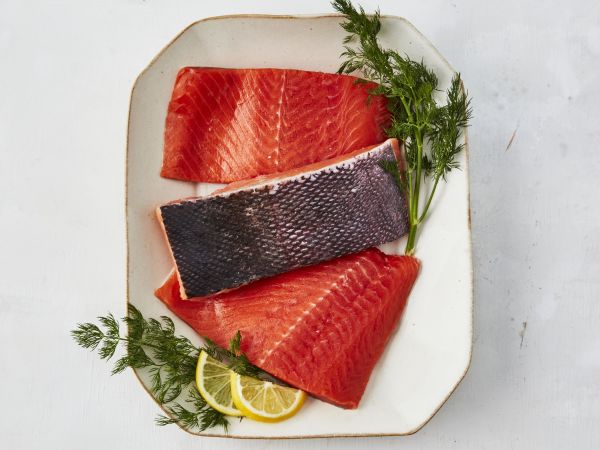
Salmon shelf life refers to the length of time that salmon remains fresh and safe to consume. It is important to understand how long salmon can last at different temperatures in order to ensure food safety. When salmon is left out at room temperature, it can become unsafe to eat within two hours. However, if salmon is properly stored in the refrigerator, it can last for several days. Various factors such as temperature, packaging, and handling practices can affect the shelf life of salmon. By following proper storage guidelines, you can extend the shelf life of salmon and reduce the risk of foodborne illness.
Salmon Shelf Life At Room Temperature
Salmon should not be left out at room temperature for more than two hours to ensure food safety. After this time, the salmon can begin to spoil and bacteria can grow rapidly, posing a risk to your health. It is important to promptly refrigerate or cook salmon to preserve its freshness. Proper storage and handling practices are essential to maintain the quality and shelf life of salmon. By following these guidelines, you can enjoy fresh and safe salmon for a longer period of time.
Factors Affecting Salmon Shelf Life
Several factors can affect the shelf life of salmon. These include temperature, handling practices, packaging, and the freshness of the fish. Salmon should be stored at temperatures below 40°F (4°C) to slow down bacterial growth and maintain its quality. Proper handling, such as keeping the fish properly sealed and minimizing temperature fluctuations during storage, is also important. Additionally, the freshness of the fish at the time of purchase and the time it has spent in transit can impact its overall shelf life. By considering these factors, you can ensure that your salmon stays fresh and safe for consumption.
Risks Of Leaving Salmon Out
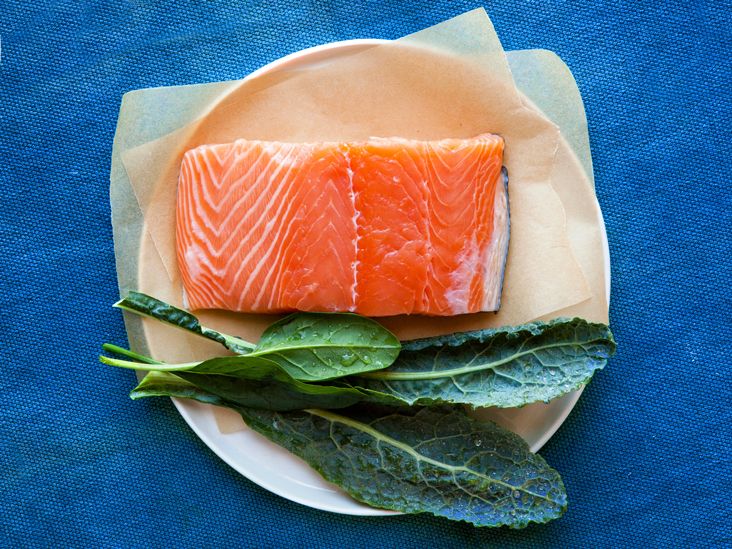
Leaving salmon out at room temperature for an extended period of time poses various risks to food safety. One of the main concerns is the growth of harmful bacteria on the fish. Bacteria can multiply rapidly in the “danger zone” between 40°F and 140°F (4°C and 60°C), increasing the risk of foodborne illness. Additionally, prolonged exposure to higher temperatures can cause the quality of the salmon to deteriorate, leading to spoilage. To ensure the safety of the salmon, it is important to follow proper handling and storage guidelines and refrigerate or cook the fish within two hours.
Bacterial Growth On Salmon
Bacterial growth on salmon is a significant concern when the fish is left out at room temperature for too long. Salmon provides an ideal environment for bacteria to multiply rapidly, especially in the danger zone of 40°F to 140°F (4°C to 60°C). This can lead to the development of harmful bacteria such as Salmonella and Listeria, increasing the risk of foodborne illnesses. To prevent bacterial growth, it is crucial to refrigerate or cook salmon within two hours of it being exposed to room temperature. Proper handling and storage practices are essential in ensuring the safety of your food.
Impact Of Temperature On Salmon Quality
The temperature at which salmon is stored can greatly impact its quality. Salmon is a perishable food that is susceptible to bacterial growth. When exposed to temperatures between 40°F and 140°F (4°C and 60°C), harmful bacteria can multiply rapidly, leading to spoilage and potential foodborne illnesses. If salmon is not stored properly at the appropriate temperature, its texture can become mushy, the color can change, and it can develop an unpleasant odor. Therefore, it is crucial to refrigerate salmon promptly and ensure it remains at a safe temperature to maintain its quality and prevent bacterial growth.
Safe Handling Practices
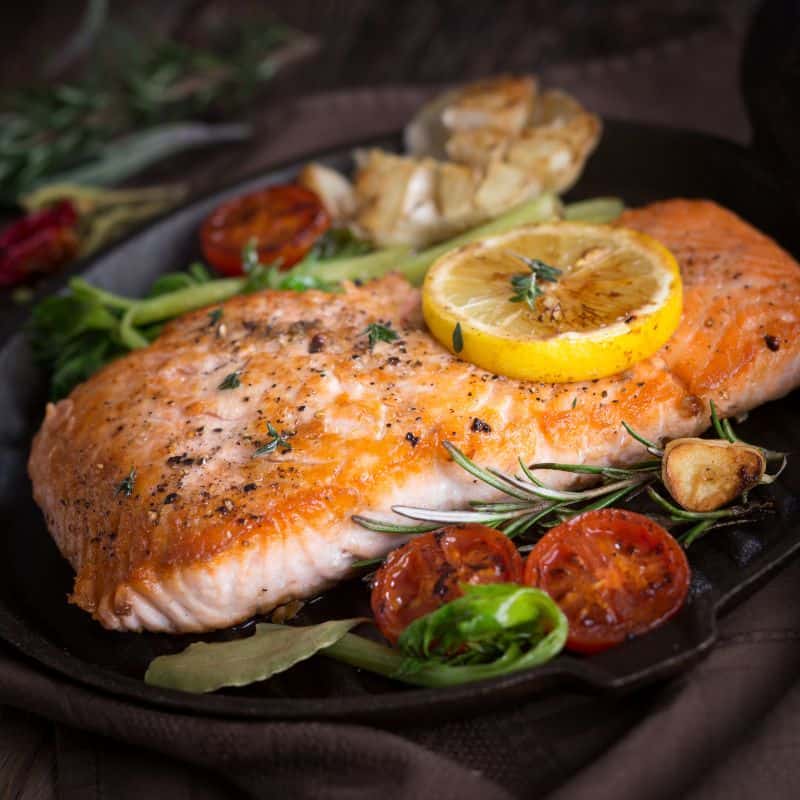
Safe handling practices are crucial when it comes to ensuring the safety and quality of salmon. To minimize the risk of foodborne illnesses, it is important to follow these guidelines:
- Refrigerate salmon promptly after purchase. Keep it at a temperature below 40°F (4°C) to prevent bacterial growth.
- Thaw frozen salmon in the refrigerator or using the defrost setting on your microwave.
- Cook salmon thoroughly to an internal temperature of 145°F (63°C) to kill any bacteria present.
- Store cooked salmon in a shallow container and refrigerate it within two hours of cooking.
- Avoid cross-contamination by using separate cutting boards and utensils for raw and cooked salmon.
By following these safe handling practices, you can enjoy salmon without compromising your health.
Refrigeration Guidelines For Salmon
Refrigeration is key to preserving the freshness and quality of salmon. To ensure food safety, it is important to follow these refrigeration guidelines for salmon:
- Immediately after purchase, refrigerate salmon at a temperature below 40°F (4°C) to prevent bacterial growth.
- If storing for longer periods, wrap the salmon tightly in plastic wrap or place it in an airtight container to prevent moisture loss and freezer burn.
- Consume refrigerated raw salmon within 1-2 days to maintain its optimal quality.
- If cooked, store the salmon in a shallow container and refrigerate within two hours of cooking.
- Avoid storing salmon in the refrigerator door as it is subject to temperature fluctuations.
By following these guidelines, you can ensure the longevity and safety of your salmon.
Proper Storage Of Cooked Salmon
To ensure the safety and quality of cooked salmon, it is important to store it properly. After enjoying your meal, refrigerate the leftover cooked salmon within two hours of cooking. Place it in a shallow container and cover it tightly. Avoid storing cooked salmon in the refrigerator door, as it is subject to temperature fluctuations. Consume the refrigerated cooked salmon within 1-2 days to maintain its optimal quality. It is crucial to follow these proper storage practices to prevent the growth of harmful bacteria and to ensure the safety of your food.
Signs Of Spoiled Salmon

Spoiled salmon can exhibit several visual indicators of spoilage. Look for signs such as sliminess, discoloration, and an unpleasant, fishy odor. The flesh may appear mushy or have a sticky texture. Additionally, if the salmon has a strong ammonia smell, it is likely spoiled. It is crucial to pay attention to these visual and olfactory cues, as consuming spoiled salmon can lead to foodborne illnesses. To ensure food safety, always discard any salmon that shows these signs of spoilage.
Visual Indicators Of Spoilage
Spoiled salmon can exhibit several visual indicators of spoilage. Look for signs such as sliminess, discoloration, and an unpleasant, fishy odor. The flesh may appear mushy or have a sticky texture. Additionally, if the salmon has a strong ammonia smell, it is likely spoiled. It is crucial to pay attention to these visual and olfactory cues, as consuming spoiled salmon can lead to foodborne illnesses. To ensure food safety, always discard any salmon that shows these signs of spoilage.
Smell And Texture Changes In Spoiled Salmon
Spoiled salmon can exhibit distinct smell and texture changes that indicate its deterioration. When salmon spoils, it develops an unpleasant and pungent fishy odor, often described as a strong ammonia smell. This odor is a clear indication that the fish is no longer safe for consumption. In terms of texture, spoiled salmon may feel slimy or mushy to the touch. It may also have a sticky or tacky texture instead of the firmness commonly associated with fresh salmon. These changes in smell and texture are key indicators that the salmon has reached an unsafe state and should be discarded immediately.
Preventing Foodborne Illness
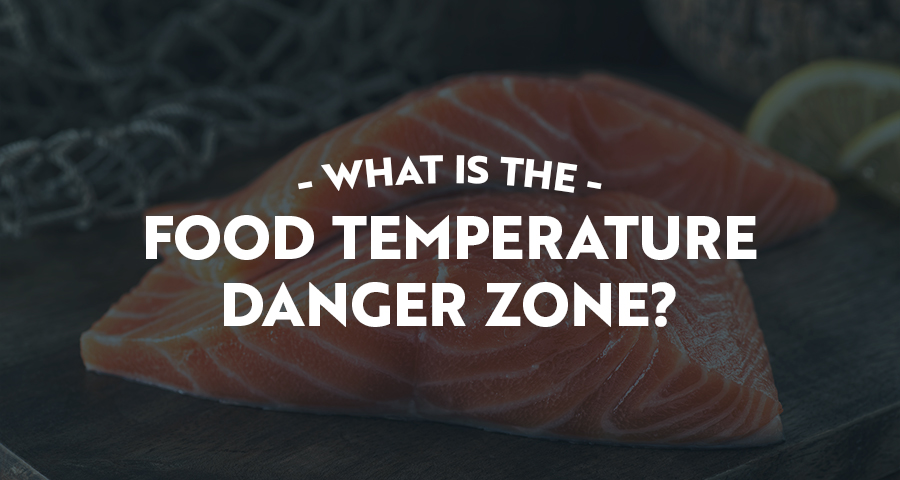
Preventing Foodborne Illness: It is crucial to take necessary precautions to prevent foodborne illness when handling and consuming salmon. Here are some tips to ensure food safety:
- Ensure proper storage: Store raw salmon in the refrigerator at or below 40°F (4°C) and consume it within two days. Cooked salmon should be refrigerated within two hours of cooking.
- Avoid cross-contamination: Separate raw salmon from other foods, utensils, and surfaces to prevent the spread of bacteria.
- Cook to the right temperature: Cook salmon to an internal temperature of 145°F (63°C) to kill any potential harmful bacteria.
- Practice good hygiene: Wash hands thoroughly before and after handling salmon to avoid contamination.
- Be cautious when eating raw or undercooked salmon: If consuming raw or undercooked salmon, ensure it is from a reputable source and has undergone proper processing and handling.
By following these guidelines, you can reduce the risk of foodborne illnesses associated with salmon consumption.
Health Risks Of Consuming Spoiled Salmon
Consuming spoiled salmon can pose serious health risks. Spoilage in salmon can occur due to bacterial growth, which can lead to foodborne illnesses. The presence of harmful bacteria such as Salmonella and E. coli can cause symptoms like nausea, vomiting, diarrhea, abdominal pain, and fever. In severe cases, these bacterial infections can lead to more serious complications, especially in vulnerable individuals such as young children, the elderly, and those with weakened immune systems. It is essential to ensure that salmon is properly stored and handled to avoid the risks associated with consuming spoiled seafood.
Tips For Safe Consumption Of Salmon
When consuming salmon, it is important to follow safe handling practices to ensure food safety. Here are some tips for safe consumption of salmon:
- Purchase from a reputable source: Buy salmon from trusted suppliers or grocery stores known for their fresh seafood.
- Check for freshness: Look for salmon with firm flesh, a mild odor, and clear eyes. Avoid fish with discolored or slimy skin.
- Cook thoroughly: Cook salmon to an internal temperature of 145°F (63°C) to kill any potential harmful bacteria.
- Store properly: After cooking, refrigerate leftover salmon within two hours. Consume it within 3-4 days.
- Avoid cross-contamination: Separate raw salmon from other foods to prevent the spread of bacteria.
- Follow the “first in, first out” rule: Use older salmon before the newly purchased ones to prevent spoilage.
By following these tips, you can enjoy salmon safely and minimize the risk of foodborne illnesses.
Conclusion
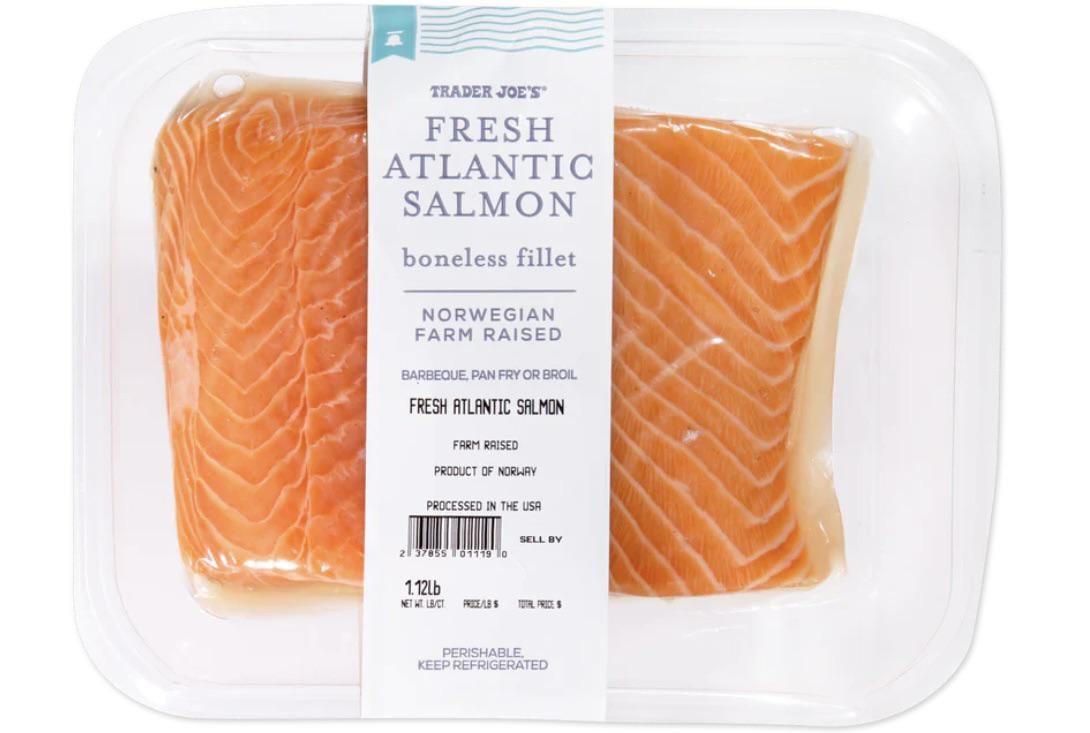
In conclusion, ensuring the food safety of salmon is crucial to prevent the risk of foodborne illnesses. Salmon should be handled and stored properly to maintain its quality and freshness. It is important to refrigerate cooked salmon within two hours and consume it within a few days. Pay attention to visual indicators and changes in smell and texture to identify spoiled salmon. By following safe handling practices and being mindful of storage guidelines, individuals can enjoy salmon safely and minimize the risk of foodborne illnesses. Always prioritize the health and safety of yourself and your loved ones when consuming salmon.
Importance Of Properly Storing Salmon
Properly storing salmon is of utmost importance to maintain its freshness and prevent the risk of foodborne illnesses. Refrigerating cooked salmon within two hours helps to inhibit bacterial growth and ensure food safety. By storing salmon at the appropriate temperature, its quality and flavor can be preserved for a longer period. Additionally, following safe handling practices and being mindful of storage guidelines can minimize the risk of spoilage and ensure that salmon can be enjoyed safely and deliciously. prioritize the health and safety of yourself and your loved ones when consuming salmon.
FAQ About How Long Can Salmon Sit Out: Ensuring Food Safety
Q: How long can cooked salmon sit out at room temperature?
A: Cooked salmon should not be left out at room temperature for more than 2 hours. It is important to refrigerate leftovers promptly to prevent foodborne illnesses.
Q: Can I eat salmon that has been left out overnight?
A: It is not recommended to consume salmon that has been left out overnight. Bacteria can multiply rapidly at room temperature, increasing the risk of food poisoning.
Q: How can I safely store leftover salmon?
A: To safely store leftover salmon, place it in an airtight container and refrigerate it within 2 hours of cooking. Alternatively, you can freeze the salmon for longer storage.
Q: What are the signs that salmon has gone bad?
A: Signs that salmon has gone bad include a sour or rancid smell, slimy texture, or discoloration. If you notice any of these signs, it is best to discard the salmon.
Q: Can I reheat salmon that has been left out?
A: It is not recommended to reheat salmon that has been left out for an extended period. When in doubt, it is safer to discard any salmon that has been left out for too long to avoid foodborne illnesses.
Q: How can I ensure the safety of salmon dishes at gatherings or events?
A: To ensure the safety of salmon dishes at gatherings or events, keep them refrigerated until serving time. Use chafing dishes or hot plates to keep the salmon warm during the event, and refrigerate any leftovers promptly.

Welcome to Braddock Bay Tavern & Grill, where history, delicious cuisine, and stunning views come together to create an unforgettable experience. Our restaurant, situated on the picturesque edge of Lake Ontario, has a rich history that adds a unique charm to your dining experience. The roots of our establishment can be traced back to 1865, when it was first constructed as an icehouse. Over the years, it transformed into the historic Braddock Bay Hotel, becoming a beloved local landmark. Today, we take pride in preserving the building’s historical beauty, ensuring that every visit to our restaurant is a journey through time.